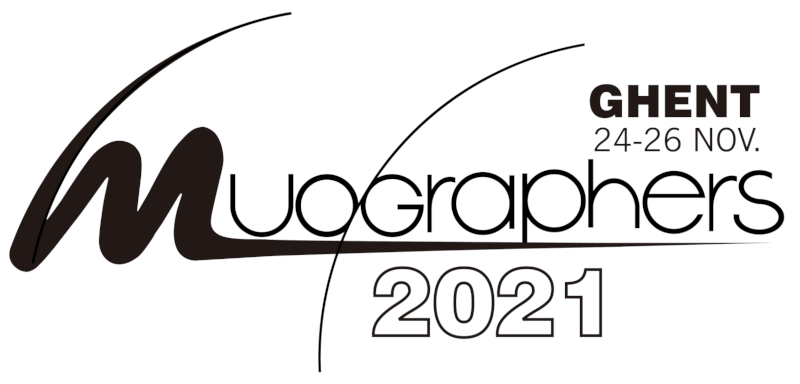We are currently developing a borehole detector using nuclear emulsions. Because of the high resolution of nuclear emulsions, the detector can be inserted into the borehole whose diameter is 75mm without losing angular accuracy or other performance characteristics even if the size of nuclear emulsions is reduced. Furthermore, no power supply is required. In this poster, we will report the...
We have developed a technique for non-destructive inspection of huge structures such as the Egyptian pyramids and nuclear reactors using cosmic rays, which have high material penetration ability. In this study, we proposed a new application of this technique to the cavity exploration of trees. We used nuclear emulsion as a cosmic-ray detector. The non-destructive inspection technique using...
By taking advantage of our previous experiences in the development of muon detectors, such MuTe project in Colombia and AMIGA in Argentina, our group is developing detectors for muography and multi-purpose applications. Our prototype detectors use different modules of plastic scintillators with embedded optical fibres and 64 channel multi-anode photomultiplier tubes (PMT) with a common dynode,...
Nuclear emulsion films packed in aluminum laminated sheet were installed in a 2.9m-deep-pool.We observed cosmic rays for 13 days, and then calculated the muon flux up to about 600 MeV.
In this session, we would like to discuss the measurement results of muon flux by comparing with the measurement data of BESS and the simulated data by PHITS, with considering the systematic errors from the...
The precise measurement of low-energy muon spectra is required to improve muography of small-sized objects. We developed a 5-meter-length, rotatable, MWPC-based spectrometer to precisely measure the energy spectra of muons from 0.5 GeV to 5 GeV between vertical and horizontal directions [1]. It is a consecutive series of nineteen detectors with a positional resolution of approx. 4 mm and lead...
The design and development of detectors for muography is in constant demand of the usage of semiempirical models and simulations. In this contribution we present Meiga, a framework conceived for simulation and reconstruction of muography applications. This framework takes a simulated muon flux at ground level and propagates it through a given material where the detectors are located. It uses...
Muon radiography can be a powerful tool to study the internal density structure of large objects at a few hundred meters scale. However, background noise can reduce significantly the efficacy of this technique if not adequately eliminated. In our cosmic ray muon radiography experiment to image the internal density structure of the Wudalianchi volcano in northeast China, the background noise...
In the last decades, several attempts have been made to investigate internal structures of large bodies, such as volcanoes, with transmission muography. High spatial resolution and reduction of the strong background noise due to protons, electrons and scattered low energy muons, are the main challenges for this technique. As a possible solution to fulfill these requirements, muography with...
There are more than 20 years since cosmic ray muons have been studied in IFIN-HH. Starting as fundamental physics research, it continued later by putting muons to use, through applications. Muography is a new and emerging technique that interpret the muon flux in order to obtain information about the inner structure of dense objects. Different applications have been designed and are currently...
It can be reasoned that many emerging scientific disciplines arise when the conventional sciences cross paths in a manner not seen before. Events like these may lead to the rapid development of new methodologies, concepts, and technologies as the collaboration between previously separate research communities forms a fruitful background to further developments. This is the case also with...
In addition to imaging an object, muon scattering tomography (MST) benefits from providing additional information, i.e. the Z of the scattering material, when interrogating the object. MST’s potential therefore to image the material inside nuclear waste drums is well-established. Here the technique is extended, using machine learning methods, to provide quantifiable metrics for in-drum...
We present a feasibility study for a new muography technique, MAGnetic field Imaging by Cosmic-ray MUons (Magic-µ), whose general principles are introduced in another presentation. This new application exploits the charge of cosmic-ray muons, which causes them to shift their trajectory in response to magnetic flux density. As a first case study, we simulated the measurement of the field...
Muography is an technique that can image objects by tracking cosmic-ray-produced muons, which are unstable leptonic particles with a mass of 207 MeV and a mean lifetime 2.2 μs. Muography ispotentially useful for discovering voids inside the Great Pyramids. Our computer simulation of muography focus on studying the great Pyramid, “Khufu,” to discover voids inside it using an advanced muon...
In 1970 L. Alvarez et al. reported on the first experiment to use cosmic-ray muons to investigate the interior of a very large structure. This structure was Khafre's Pyramid at Giza. The group used, for that era, state-of-the-art instrumentation from the field of high-energy physics: spark chambers. In the intervening 40+ years, the technology used for determining the trajectories of...
There is a wide variety of applications in muography. These include engineering, border control, tunnel detection, cave mapping, architecture, archaeology, volcanology, mineral exploration, mining, rock mechanics, water exploration, and many types of monitoring applications. As an application and a discipline, muography is currently shifting from its pioneering stage to a transdisciplinary...
The angular deviation commonly represented by the scattering angle generally serves to provide the characteristic discrimination in the muon scattering tomography. The regular procedure to determine the scattering angle compromises the collection of exactly four hit locations in four detector layers among which two top detector layers are utilized to construct the first vector, whereas the...
Machine learning algorithms have preliminarily been shown to have the potential to predict volcanic eruptions by training on muon data. The high-energy particles are used to map the interior of the volcano, chiefly due to muon's relatively high mass. In this poster, we discuss opportunities in this area. Challenges include curating the large-scale datasets that are necessary for deep learning...
